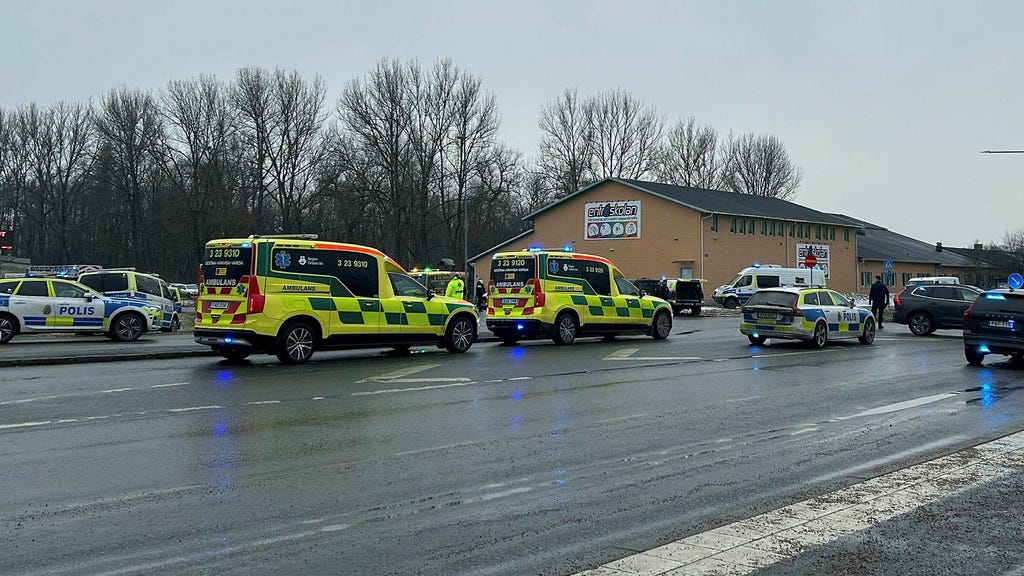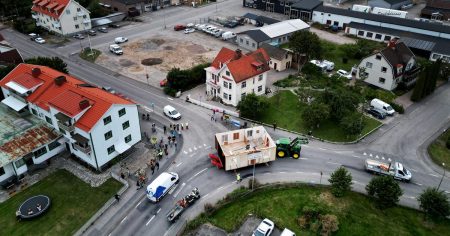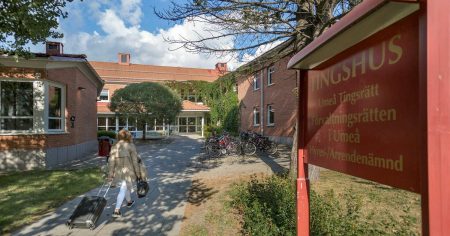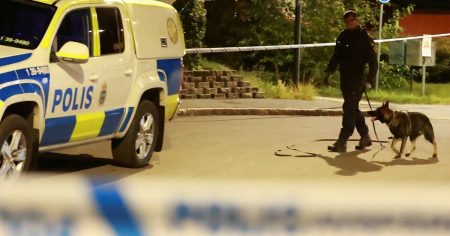A serious incident unfolded at Risbergska school in Örebro, Sweden, prompting a massive police response and widespread community concern. Initial reports indicated that shots had been fired at police officers during the operation, necessitating the deployment of the national task force. Police spokesperson Sophia Jiglind urged the public to avoid the area until further notice, emphasizing the critical nature of the ongoing situation. Emergency services confirmed that one individual had been transported from the school to the hospital. The unfolding events caused significant disruption and anxiety among students, staff, and the surrounding community.
The situation at Risbergska school, a large institution catering to approximately 2000 students from gymnasium to adult education levels, rapidly escalated into a crisis. School staff reported hearing bangs, though stopped short of describing them as explosions. Two of the school’s rectors, Mattias Molin and Svanfridur Birgisdottir, confirmed the evacuation of the school and described the scene as chaotic. Students and staff were gathered at designated assembly points while police secured the premises. Businesses in the vicinity were instructed to shelter their employees and evacuate customers, with police escorting individuals from the area. The gravity of the situation was palpable, and a sense of urgency permeated the initial response.
As the incident unfolded, details began to emerge from those directly affected by the events at Risbergska school. Metin Adem, a rector responsible for gymnasium-level courses, recounted being at an assembly point with a group of evacuated students. He acknowledged the possibility that some students may have already returned home, highlighting the rapid and unpredictable nature of the situation. The priority remained ensuring the safety and well-being of everyone involved. Linda Forsberg, from the SOS Alarm emergency services, confirmed the severity of the incident, describing it as a ”serious, grave crime.” Emergency responders, including fire and rescue services, were positioned at a safe distance, awaiting clearance from police to enter the secured area.
The police implemented strategies to manage information flow and provide support to those affected by the incident at Risbergska school. They announced the establishment of a physical information point where concerned individuals, including family members, could receive updates and ask questions. The location of this information point was yet to be communicated. Meanwhile, the community remained on high alert, anxiously awaiting further details about the unfolding events. The rapid response and coordination of various agencies demonstrated a commitment to containing the situation and ensuring public safety.
The events at Risbergska school underscored the vulnerability of educational institutions and the importance of preparedness for unexpected crises. The swift evacuation of the school and the establishment of assembly points demonstrated pre-existing safety protocols. The cooperation between school staff, emergency services, and law enforcement played a crucial role in managing the unfolding situation. As the investigation progressed, the focus would likely shift towards understanding the motivations behind the incident and implementing measures to prevent similar occurrences in the future.
The incident at Risbergska school served as a stark reminder of the need for ongoing vigilance and preparedness in the face of potential threats. The rapid response and coordinated efforts of law enforcement, emergency services, and school staff helped mitigate the immediate danger and provided support to those affected. As the community grappled with the aftermath of the incident, the focus would turn towards healing, understanding, and implementing strategies to enhance safety and security in educational settings. The incident left a lasting impact, highlighting the importance of communication, collaboration, and a commitment to ensuring the well-being of students, staff, and the broader community.














